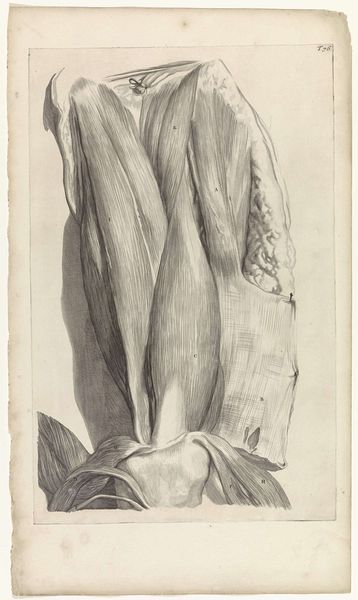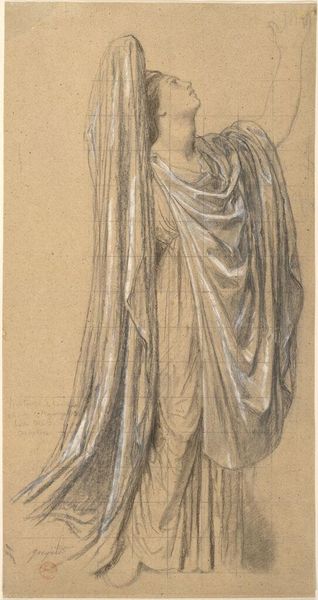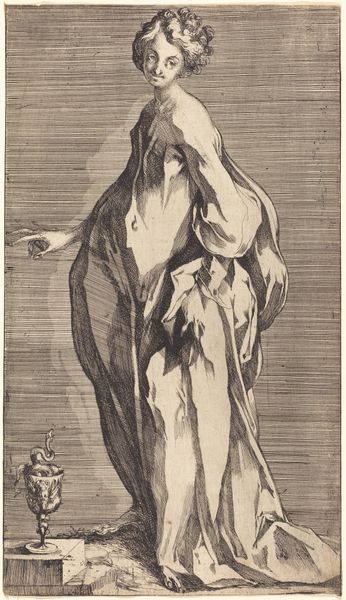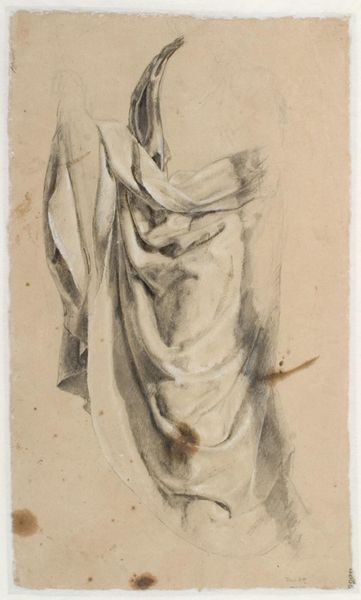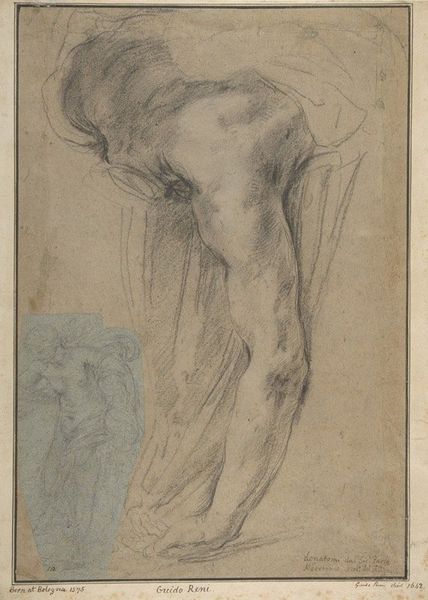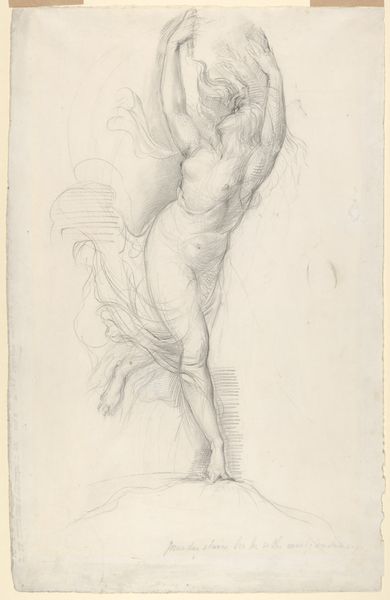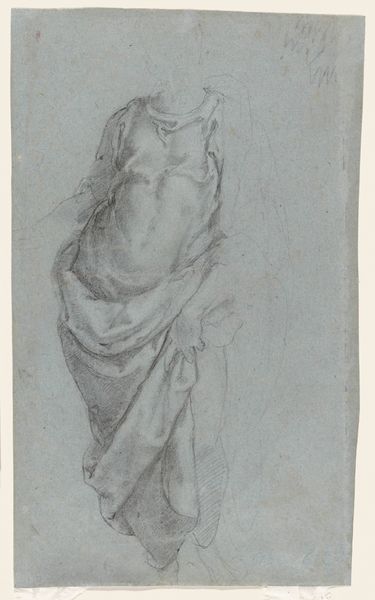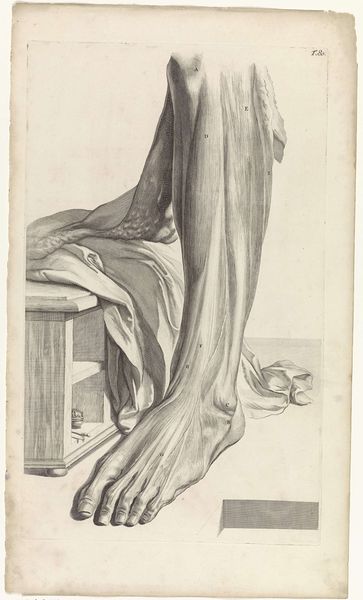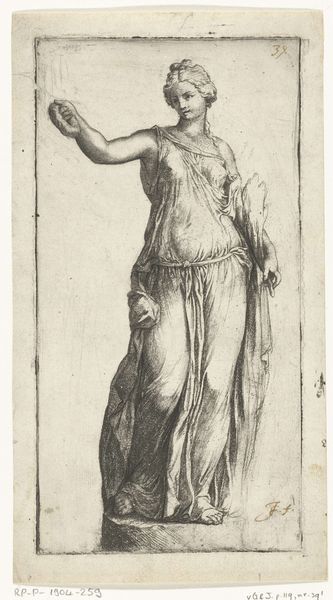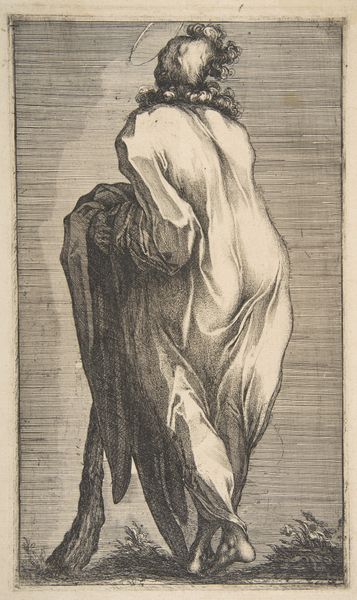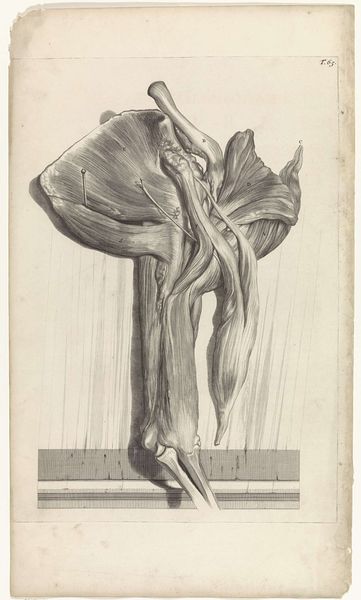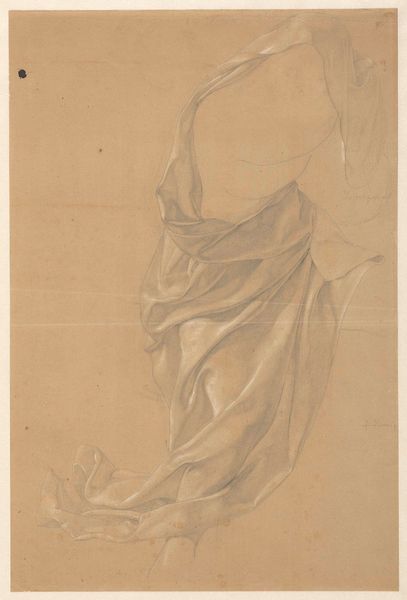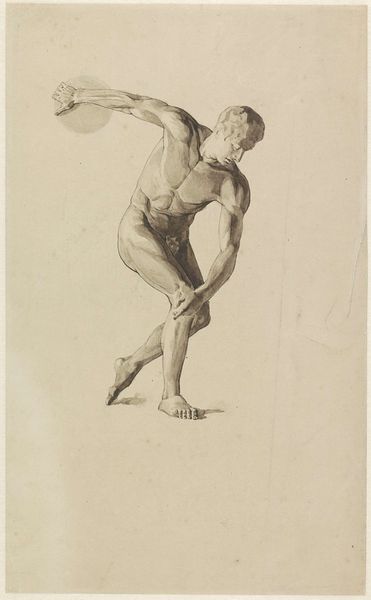
Anatomische studie van de bovenspieren van de rechterarm (buitenkant) 1685
0:00
0:00
pietervangunst
Rijksmuseum
drawing, pencil
#
drawing
#
pencil sketch
#
figuration
#
form
#
pencil drawing
#
pencil
#
history-painting
#
academic-art
#
realism
Dimensions: width 334 mm, height 475 mm
Copyright: Rijks Museum: Open Domain
Editor: So, this is Pieter van Gunst's "Anatomical Study of the Exterior Muscles of the Right Arm," made in 1685. It’s a pencil drawing, quite detailed. What strikes me is the stark realism; it's almost unsettling to see the muscles so exposed. How do you interpret this work? Curator: It's unsettling, yes, but also consider the historical context. Anatomy as a science was evolving rapidly, but access to bodies was still restricted, often fraught with ethical and social implications. Who had access to representation, and why? This drawing wasn’t just scientific; it also reflects the power dynamics of the time, revealing whose bodies were subjected to scrutiny and dissection. Think about gender and class here. Who do you imagine the audience for this image was? Editor: I imagine medical students, or maybe even artists wanting to improve their understanding of the human form? Curator: Precisely! And that gets to the core of the issue: knowledge was power. In a society deeply stratified, this image offered a select group—predominantly male—access to intimate knowledge previously shrouded in mystery. But what does it say about our relationship to the human form now? Does this type of detached representation normalize certain kinds of violence? Editor: That's a perspective I hadn't considered. Seeing it as part of a broader social conversation around power and access makes it far more complex than just a scientific illustration. Curator: Exactly. By viewing van Gunst’s drawing through this lens, we acknowledge its participation in the ongoing narrative about who gets to see, who gets to know, and ultimately, who gets to control the representation of the human body. What broader ideas come to mind for you when considering this discussion? Editor: I guess it speaks to how we still struggle with representation, with who has the authority to portray and interpret different identities. Curator: It does. And that's why revisiting these historical works is so vital; they echo through time and continue to inform our present.
Comments
No comments
Be the first to comment and join the conversation on the ultimate creative platform.

